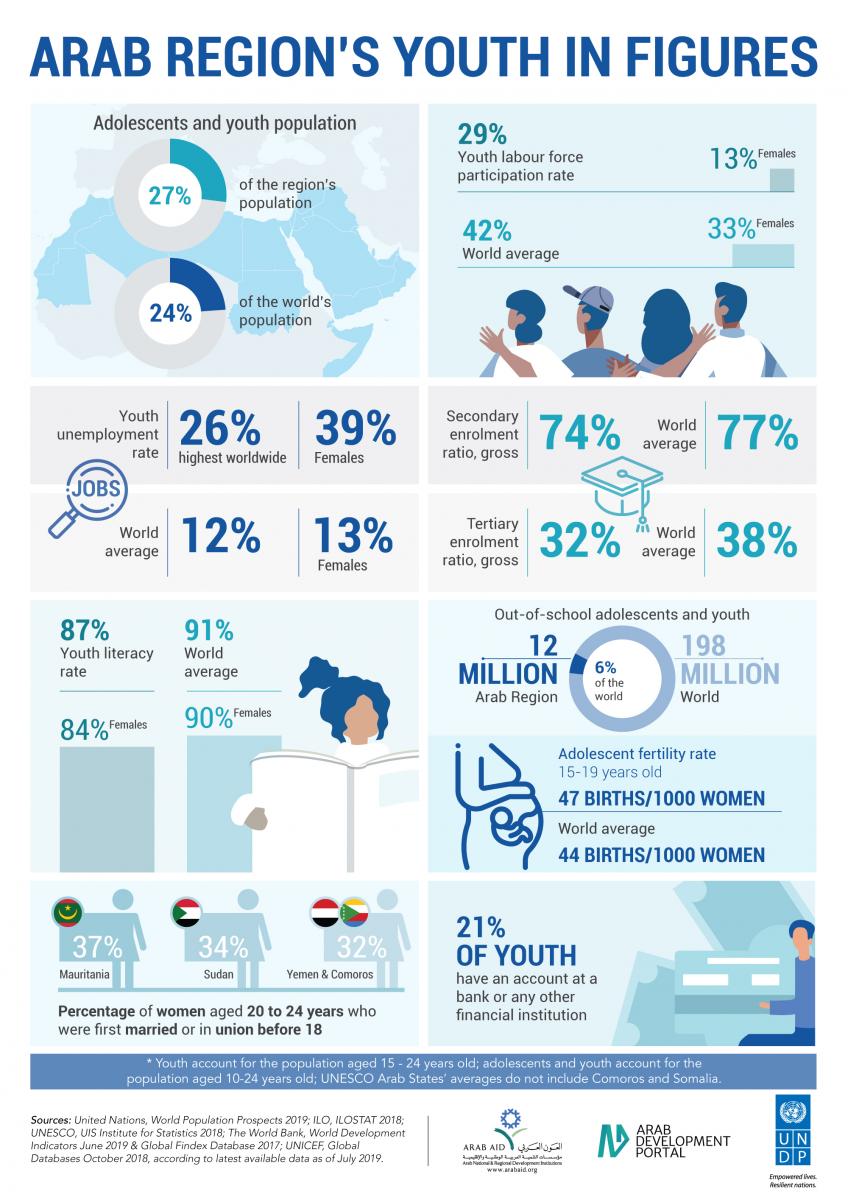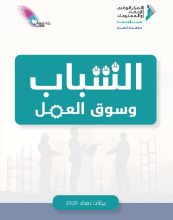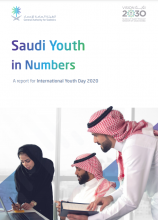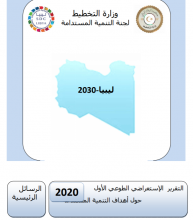Youth
The youth page is jointly developed between the Arab Development Portal - UNDP RBAS and UNICEF in collaboration with the UN Interagency group to shed light on the challenges that youth in the Arab region face and the potential they carry to implement the 2030 Agenda for Sustainable Development in their countries and the region.
Adolescents and youth (10-24 years old) in the Arab region currently account 27 percent of the total population.[1] They are the agents of change, who have the potential to build a more prosperous and resilient future for themselves and their communities. Unleashing this potential requires urgent and significant investments to create opportunities for meaningful learning, social engagement and work opportunities, all of which are currently limited, especially for adolescents and youth, including young women, refugees and persons with special needs.
The region has experienced remarkable advances in education since year 2000. Secondary gross enrolment increased to 73 percent in 2019 up from 60 percent in 2000, and gross tertiary enrolment reached 33 percent, up from 18.1 percent in 2000. Many more girls were enrolled in schools in 2019, with the gender parity index (GPI) in gross enrolment reaching 0.95 for primary, 0.95 for secondary education and 1.1 for tertiary education.[2]
However, due to COVID-19 and school closures, 100 million learners are now affected.[3] Many Arab countries have opted for alternative solutions to fill the void by offering students distance learning, which ranged from hi-tech alternatives such as online courses to lower-tech options such as educational programming on radio and television. Percentage of households with a computer in the Arab region is below 50 percent for 9 countries which is an obstacle facing the distance learning, and above 50 percent for 11 countries.[4]
While adolescents and youth in the region were able to improve their levels of education, many economies in the region fail to absorb new entrants to the labor market. Youth unemployment (age group15-24) in the Arab region is around 27 percent, higher than the unemployment rate (age group 15+) of 10.2 percent, and than the global youth unemployment rate of 15.5 percent in 2020. There are also wide gender disparities in unemployment among young people, where unemployment rate among young women in 2020 (41.8 percent) is significantly higher than the rate for young men ( 23.1 percent). The labor force participation rate of young men is almost triple that of young women in the Arab region. Only Djibouti and Comoros show a female to male labor force participation ratio above the global average of 0.66, with 0.74 and 0.73 respectively.[2][5]
In addition to structural deficiencies in the economies and the slow transition towards sectors that generate new opportunities, one of the barriers causing the gap between education and employment is the learning methods in schools which do not allow students to acquire the required skills to engage meaningfully in social, economic and political opportunities. The high proportion of youth not in education, employment or training (NEET) is another serious concern. Young women remain at much greater risk of being unemployed than young men. While on average it takes young men in the region two to three years to shift successfully from school to work, an increasing number of young women are not making the transition at all. The proportion of NEET youth varies across the region, ranging from 9.6 percent in Qatar to 44.8 percent in Yemen. The number of NEET young women is close to 30 percent across the region, but is as high as 69.6 percent in Yemen.[6]
Many challenges remain in the basic level of adolescents’ well-being as well. Violence against children in the region starts early and continues throughout the life of the child. Amongst students aged 13 to 15, around 12 million (close to half) experience bullying while at school, with levels above 50 percent in Egypt, Palestine and Algeria. Conflicts and political instability have further increased the vulnerabilities of adolescents and youth, exposing them to more violence, exploitation and abuse.[7][8]
Mostly driven by poverty, child marriages make girls face higher risk of abuse, exploitation, and isolation from family and friends, which deeply affects their physical and mental health. Overall, one in five girls in the Arab region are married before the age of 18. While this percentage declined by almost half, from 34 percent to 18 percent, over the last three decades, this decline has slowed down significantly within the last decade. At the country level, child marriage prevalence rates vary from a high of 1 in 3 children in Sudan and Yemen to a low of 1 in 50 children in Tunisia.[9][10]
High adolescent birth rate and female genital mutilation are other areas of concern in the region. Adolescent fertility rate – the number of births per 1,000 women ages 15-19— in the region varies by country but declined overall from 69.3 in 1990 to 46 in 2018[2] Driven by social norms combined with lack of enactment and enforcement of legislation, female genital mutilation incidence in the Arab region remains among the highest in the world, with the latest figure registering 87 percent in Egypt.[11][12]
This overview is based on most available data as of November 2020.
Sources:
[1] Population Division of the Department of Economic and Social Affairs of the United Nations Secretariat. 2020. World Population Prospects 2019 Revision.[ONLINE] Available at:
https://population.un.org/wpp/ [Accessed 19 November 2020].
[2] The World Bank. 2020. World Development Indicators. [ONLINE] Available at: https://databank.worldbank.org/source/world-development-indicators [Accessed 19 November 2020].
[3] United Nations Organization for Education, Science and Culture (UNESCO). 22 May 2020. UNESCO organized a regional webinar on the impact of COVID-19 on the Higher Education sector in the Arab region https://en.unesco.org/news/unesco-organized-regional-webinar-impact-covid-19-higher-education-sector-arab-region
[4] International Telecommunication Union (ITU). 2019. [ONLINE] Available at: https://www.itu.int/en/ITU-T/publications/Pages/dbase.aspx [Accessed 19 November 2020]
[5] ADP calculations based on data extracted from the International Labour Organization (ILO). 2018. ILOSTAT. [ONLINE] Available at: https://www.ilo.org/ilostat/ [Accessed 19 November 2020].
[6] International Labour Organization (ILO). 2018. ILOSTAT. [ONLINE] Available at: https://www.ilo.org/ilostat/ [Accessed 19 November 2020].]
[7] World Bank. 2017. Harmonized List of Fragile Situations. [ONLINE] Available at: http://www.worldbank.org/en/topic/fragilityconflictviolence/brief/harmonized-list-of-fragile-situations [Accessed 19 November 2020].
[8] No Lost Generation Initiative. 2017. Translating Research into Scaled Up Action: Evidence Symposium on Adolescents and Youth in MENA (summary report). [ONLINE] Available at:
https://www.nolostgeneration.org/sites/default/files/eman/Highlights/SUMMARY%20REPORT_ESAY2017.compressed.pdf [Accessed 19 November 2020].
[9] United Nations Children's Fund. 2014. Ending Child Marriage Progress and Prospects. [ONLINE] Available at:
https://www.unicef.org/media/files/Child_Marriage_Report_7_17_LR..pdf [Accessed 19 November 2020].
[10] UNICEF. 2018. A Profile of Child Marriage in MENA. [ONLINE] Available at: https://www.unicef.org/mena/reports/profile-child-marriage [Accessed 19 November 2020].
[11] Latest prevalence rates of female genital mutilation in the region are as follow: Egypt: 87 percent aged 15-49 (EDHS, 2015); 14 percent aged 0-14 (UNICEF 2016); Sudan: 86.6 percent aged 15-49 (Sudan MICS, 2014); 32 percent aged 0-14 (UNICEF 2016); Djibouti: 78 percent aged 15-49 (Djibouti DHS, 2012); Yemen: 19 percent aged 15-49 (Yemen DHS, 2013); and Iraq: 8 percent MICS aged 15-19 (MICS 2011).
[12] UNICEF. October 2018. Female Genital Mutilation Data. [ONLINE] Available at: https://data.unicef.org/topic/child-protection/female-genital-mutilation/ [Accessed 19 November 2020].




